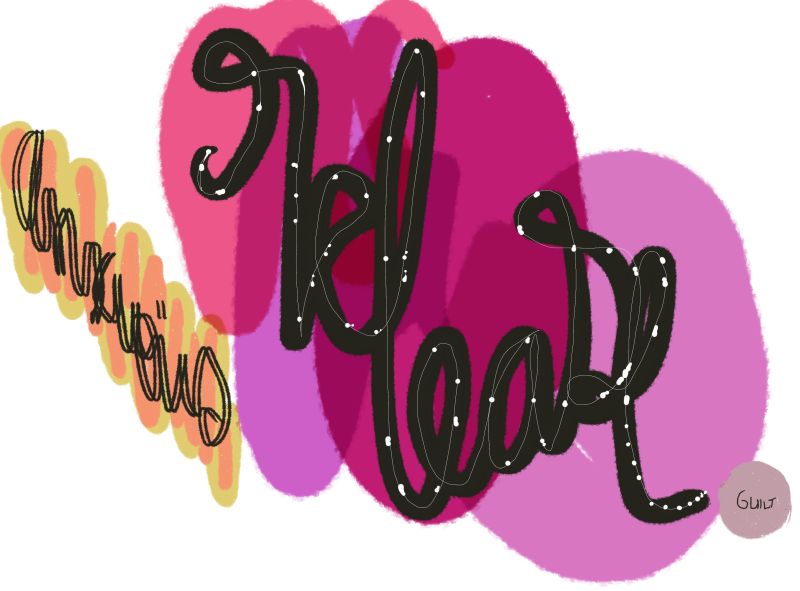THIS POST INCLUDES:
- Art Therapy and Compulsive Spending
- About the Client
- Art Therapy Exercise
- Client Insight and Outcomes
- Disclaimer
- FREE DOWNLOAD Art Therapy Exercise
ART THERAPY AND COMPULSIVE SPENDING
On the other hand, compulsive spending has very little to do with extraordinary spending during a season. Compulsive spending doesn’t always correlate with a lack of budgeting or disorganised finances. Compulsive spending can be done within budgetary means without creating financial problems.
Compulsive spending has little to do with budgets or even needing material items. Compulsive spending is an emotional event that seeks to provide a function of release for the person that is spending. Once the compulsion has been met, the release occurs and the individual feels emotional comfort. Unfortunately, that emotional safety is short-lived and the compulsion rises again.
As with most compulsive behaviours, the highs and lows seem to escalate and therefore the spending will change either with an increased dollar amount of spending or an increased frequency of spending. Even worse will be an increase in both dollar amount and frequency of spending.
Compulsive spending is often a cyclical problem. As a person spends to alleviate difficult emotions, the spending can also create negative feelings of shame and regret. This places the individual in a predicament where another spending event will most likely alleviate these negative feelings. The cycle then continues and is reinforced with every spending event.
CHARACTERISTICS OF COMPULSIVE SPENDING
Below are some of the common characteristics of compulsive spending that may indicate a problem to address:
- Large amounts of your income are spent on non-essential purchases
- Your debt due to non-essential purchases is increasing over time and not being paid off
- Resolving to stop spending and breaking that resolve
- Hiding spending from loved ones
- High level of excitement when purchasing but less interest in the actual item
- A stockpile of unused items begins to form
- Buying a large number of things you do not need.
- Presence of negative feelings such as shame and regret after spending
- Relationships under stress due to spending
- Feelings of lack of control when spending.
- Hoping that some purchases
HOW COMPULSIVE SPENDING DEVELOPS
As with any maladaptive behaviour, it exists primarily as a coping mechanism for negative feelings that are overwhelming to the individual. Common feelings experienced by those who engage in compulsive spending include low self-worth, anger, loneliness, depression, and anxiety.
The act of spending attempts to avoid, distract or replace the negative feelings that are being experienced. When an individual experiences an increase in these negative feelings, impulsive spending activities may also increase. To many people this seems illogical to engage in an activity that may in effect be creating some of these negative emotions, however, for many who engage in compulsive spending, the impulsivity outweighs any cognitive thoughts of logic and reason.
Research indicates that impulsive behaviours develop in early stages of the lifespan when the ability to delay behaviour is at a low. Research also indicates that people who spend compulsively fall in the young female demographic. The age range is typically in the late adolescent and early adulthood range when individuals have more discretionary spending available.
ABOUT THE CLIENT
- Name: Imogen
- Age: 48
CURRENT CLIENT ISSUES:
Imogen recently had breast cancer and a mastectomy as part of her treatment. It has been 12 months since her operation and she feels low about the experience. Imogen is currently single but doesn’t feel it is worth finding a partner since her mastectomy. Imogen enjoys watching the Lifestyle shopping channels. She enjoys the banter between the hosts and often sees items that she wants to buy in every show.
When Imogen turns the TV off and resumes her activities, she feels down again and starts to worry about how many packages are coming to her. She is also becoming stressed about her credit card balance but feels she has plenty of time to pay it off. When the packages arrive, she often feels excited again but sometimes what’s inside isn’t what she expected after seeing it on TV.
ART THERAPY EXERCISE
INSTRUCTIONS:
- Ask the client to recall an experience where they purchased a non-essential item. The purchase should represent something that is not related to daily living such as groceries, utility bills etc.
- Ask the client to reflect on how they felt in the time before the purchase.
- Ask the client to reflect on how they felt in the time during the purchase.
- Ask the client to reflect on how they felt in the time after the purchase.
- Can the client identify a change in emotion during those times?
- Ask your client to express any change in emotion in an artwork.
- Discuss with your client how these changes may have been triggered.
- What can your client learn about the way in which their emotions change?
CLIENT INSIGHT AND OUTCOMES
Imogen felt confident that her purchase would make her feel better about herself when it arrived. After a few hours, she often noticed regret and guilt at spending more money.
Imogen felt she was using the thrill of the purchase to boost her mood. Imogen had also felt she had been using shopping as a way to give self-love when she felt the likelihood of rejection from a potential relationship would be high.

DISCLAIMER
FREE DOWNLOAD: Art Therapy Exercise

BUILD YOUR ART THERAPY REFERENCE MATERIALS:
Pin this image to your Pinterest board.

SHARE KNOWLEDGE & PASS IT ON:
If you’ve enjoyed this post, please share it on Facebook, Twitter, Pinterest. Thank you!
